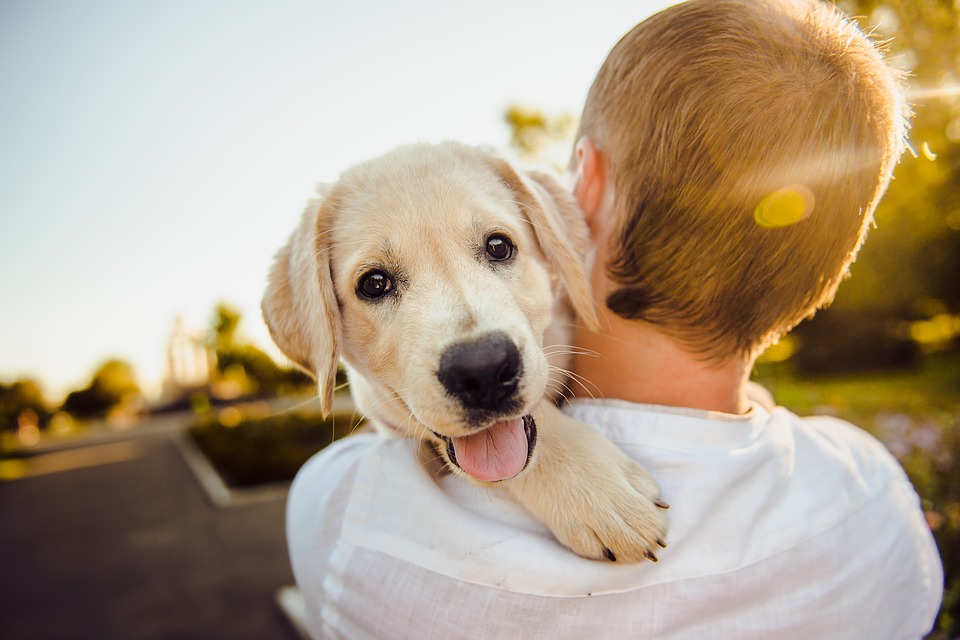One of the joys of watching human infants grow is the way in which they develop language and, after a while, are able to let us know how they feel, what they want, and, sometimes, what they’re afraid of. Even though our dogs have the emotional maturity of a child aged between two and three years, and are able to experience fear, happiness, comfort, hunger and thirst – just as our youngest children can – they do not have the ability to communicate their emotions and tell us how they are feeling. Just as veterinary surgeons need to learn how to be a detective and piece together the signs and symptoms that affect our pets, we need to learn how to read our dogs’ body language and behaviour to discover what’s going on with our canine best friends.
We don’t believe that dogs have the ability to plan for the future, so they largely live ‘in the moment’ although they clearly remember many things, which, in turn, affects their behaviour.

Dogs have a way of showing us much of their state of mind through their body language and there are several physical characteristics that demonstrate whether a dog is happy or not. In human terms, we have come to understand that both happiness and unhappiness are states which deviate from the norm, which is contentment, and most of us seek on-going contentment rather than happiness, because a continual state of euphoria would not be normal.
Dogs utilize the same physiological triggers to alter their emotional state, using hormones such as serotonin, dopamine and oxytocin just as we do, and scientists measure the hormone cortisol to measure happiness in humans and in other mammals such as dogs.
Every dog is different: some are more communicative, others more aloof, some crave physical closeness to humans, others are more cautious, but, in general, the physical signs of a happy dog range from a wagging tail, relaxed ears, a partially open mouth, rolling over to show you their belly and invite a belly rub and a wide range of invitations to play. Of course, a relaxed and contented dog may be content just to sit beside you and be part of what you’re doing – regardless of what that may be – so it isn’t always easy to judge how contented your dog is simply by these physiological signs or to be confident that, overall, your dog is happy.
Knowing that dogs live very much ‘in the moment’ it can be helpful to observe the behavioural signs that indicate how your dog is feeling.

Most dogs react very positively to exercise or even just the sight of a lead that indicates it’s time for a walk! A dog that ceases to be interested in going out may be unwell or in pain. Of course, it could be that the dog is simply too tired but watching these behavioural signs and building up a picture over a few days can be beneficial in getting to the cause if anything is not right.
Happy dogs are usually relaxed and are not destructive. If your dog becomes destructive, that can be indicative of stress or other aspects of anxiety.
Not all dogs are good eaters, some can be quite fussy, but if your dog suddenly goes off his food, that can also be a sign of stress or of possible illness.
Most dogs enjoy body contact with their favourite humans and will lean into you if you stroke or cuddle them. Remember that dogs are not naturally comfortable with very close contact like hugs or kisses but the key sign to watch for is any lack of excitement or unwillingness for close contact in a manner that differs from how they might normally be.
Most dogs need routine. They find it comfortable when the same things happen at the same time each day and most of us know the feeling that our dogs can tell the time because they anticipate and somehow recognize that it’s now time for dinner, or a walk, or simply bedtime. If the routine is broken, some dogs find that stressful – unless the new routine gradually becomes a replacement for the old routine, in which case, most dogs will relax into the new order over time.

All this presupposes that we have little influence over our dogs’ happiness but, actually, the opposite is true. We all have a responsibility to provide for our dog’s wellbeing: keeping them well fed, with access to clean drinking water, comfortable, safe from accident and disease and with the ability to simply be a dog and behave like one. In addition, dogs pick up quickly on stress in their environment and tensions or sadness in the household can quickly affect a dog’s behaviour. Arguments between humans challenge the bonding between dogs and humans and this makes them uncomfortable. Similarly, dogs feel bereavement and the loss of a loved one – whether it’s a human or another dog – can affect a dog’s behaviour for months on end.
Of course, just like humans, dogs can vary enormously in the way in which they demonstrate happiness, and, just as any one of us can have a bad day, so can our dogs. Overall, it’s not the snapshot of any given moment that indicates how content our dogs are but the longer term, general behaviour that dogs exhibit over a period of time that will guide you in measuring how happy they are.
If, most of the time, your dog has a wagging tail, a normal appetite and demonstrates excitement when he sees you, you can safely assume that he’s happy most of the time. It’s when things change that we need to take special note.


